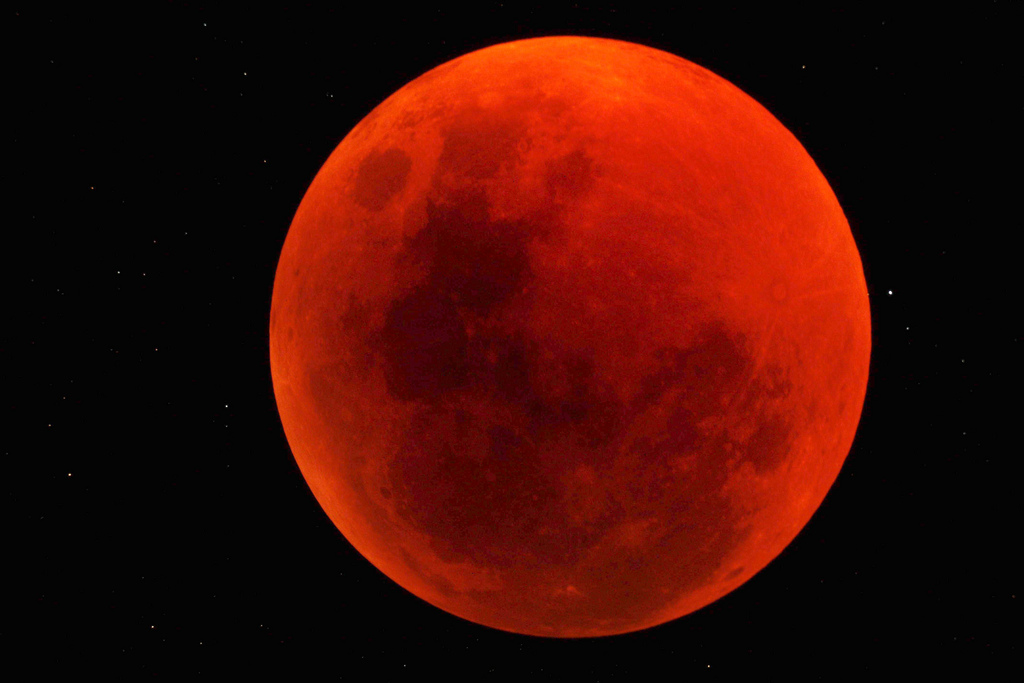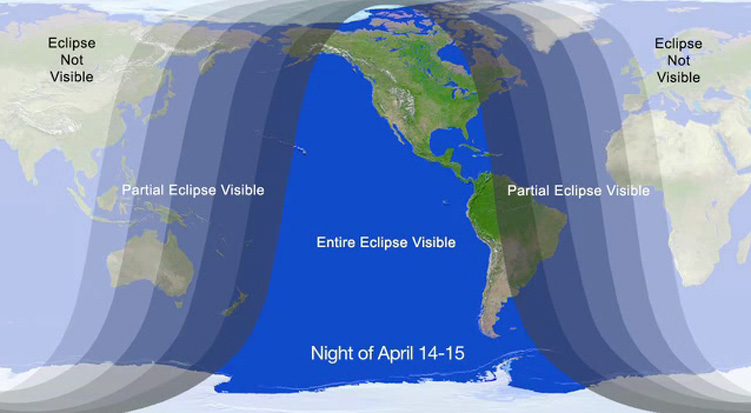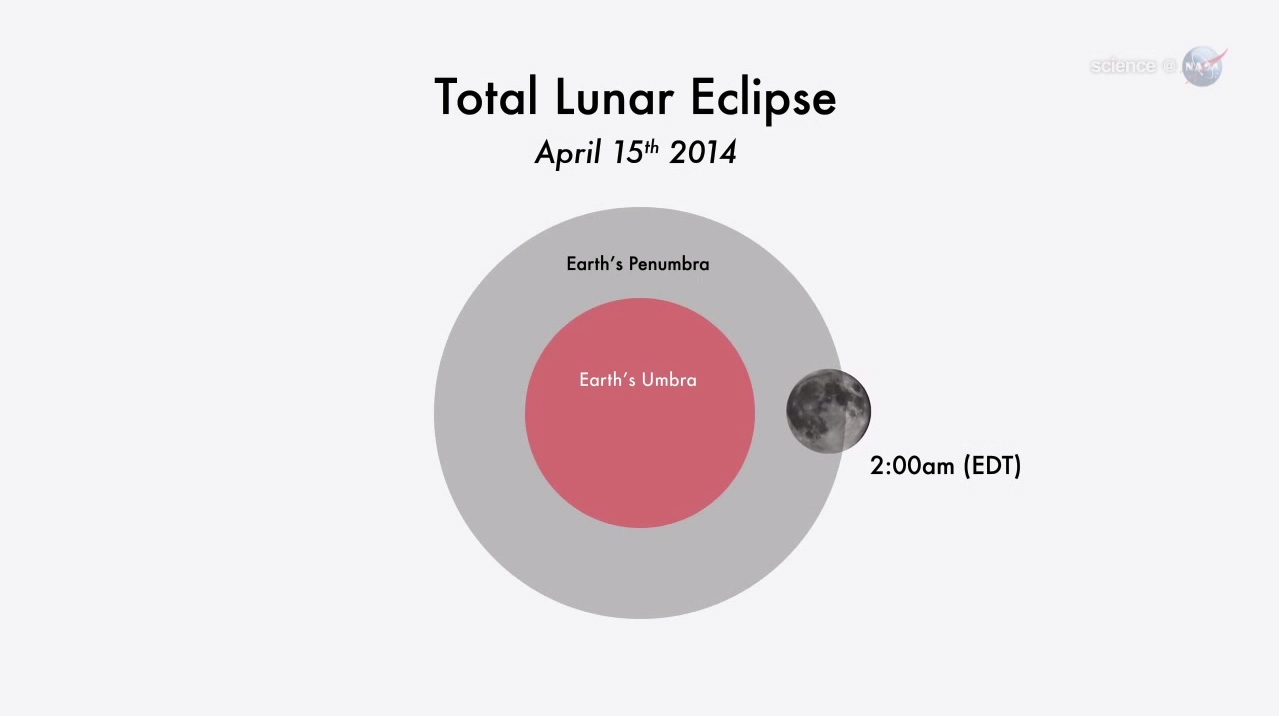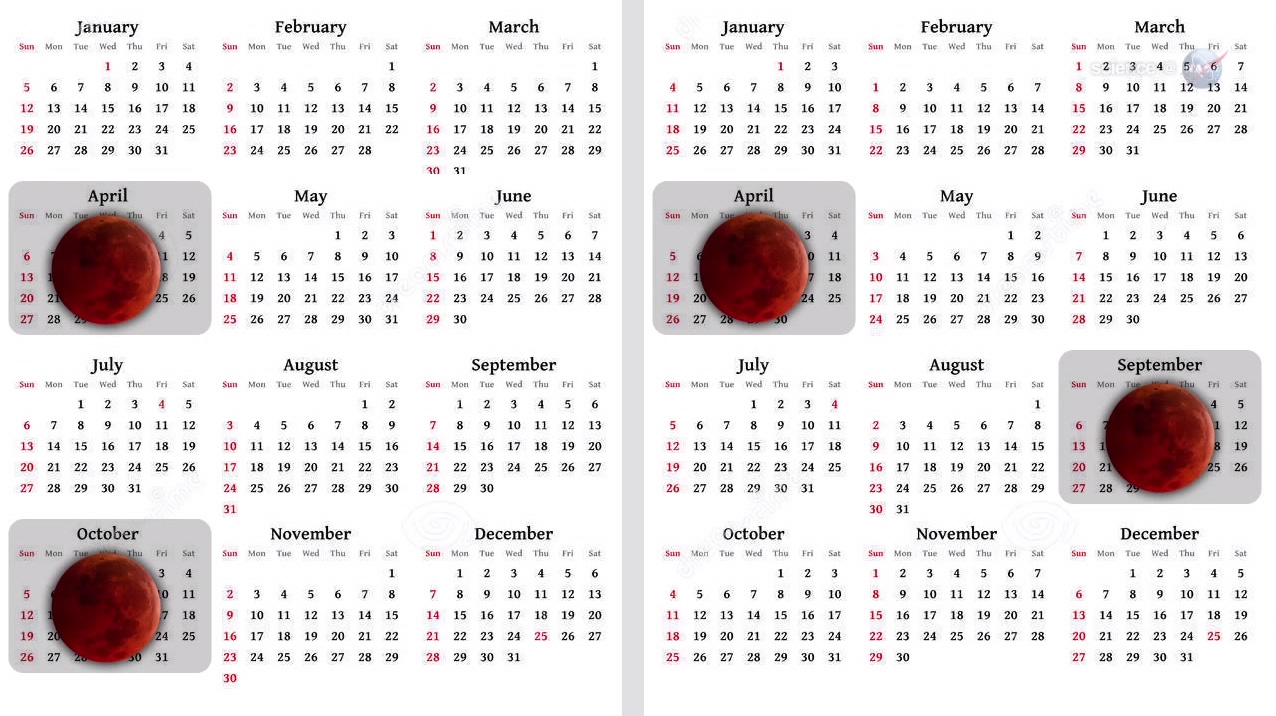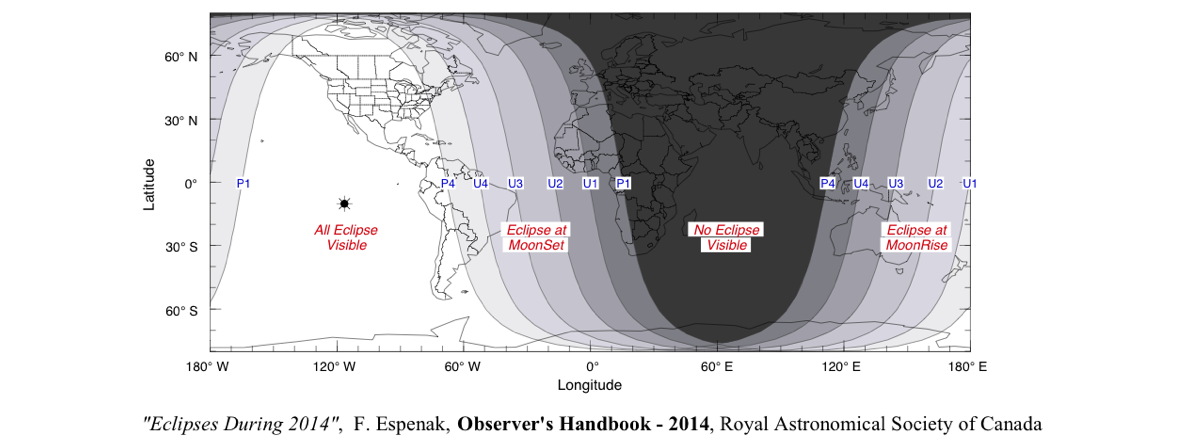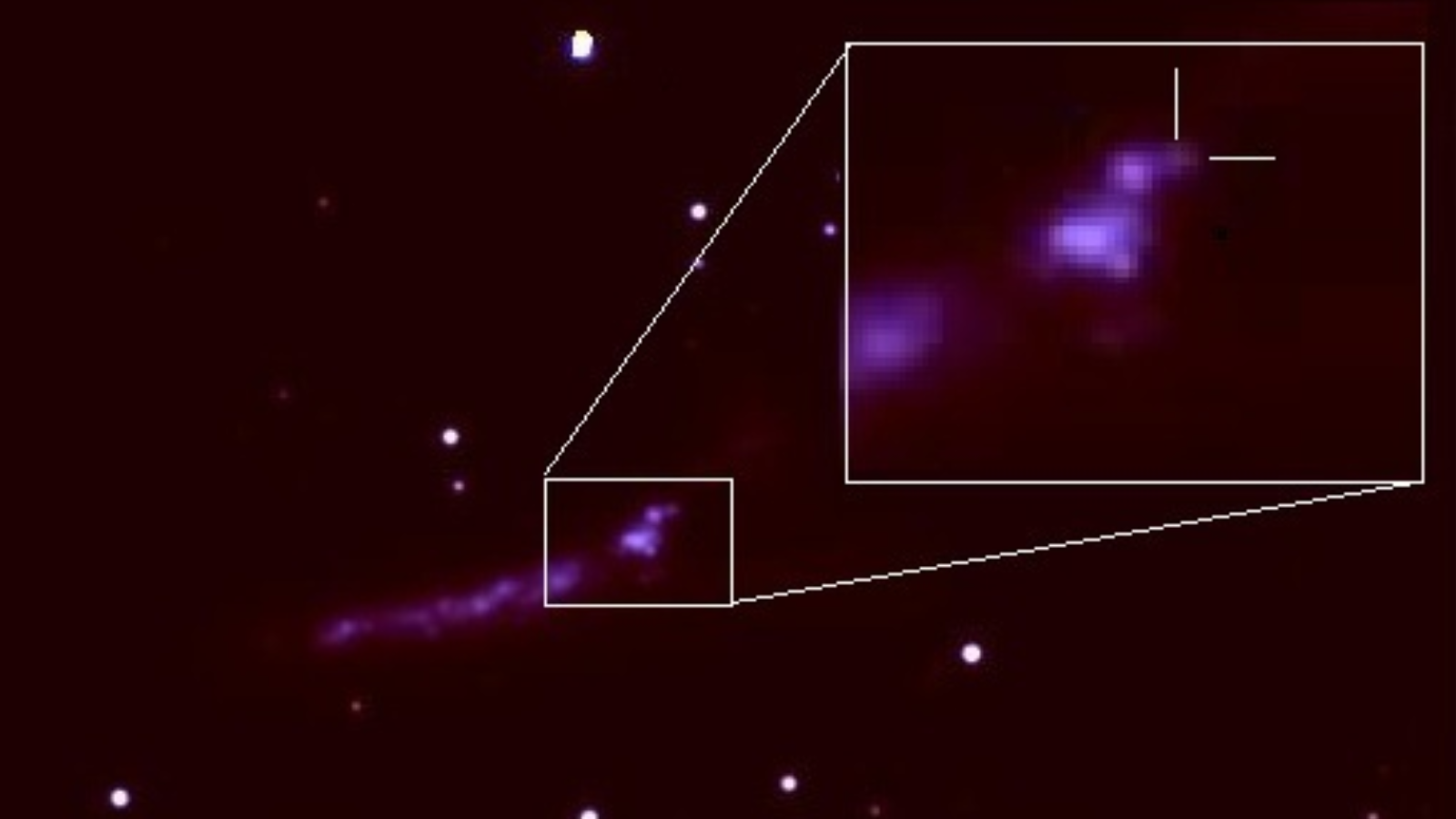Total Lunar Eclipse of April 15, 2014: Moon Visibility Maps (Gallery)
Total Lunar Eclipse of June 2011
The first total lunar eclipse of 2014 will occur overnight on April 14 -15, and mark the beginning of a lunar eclipse tetrad - a group of four back-to-back total lunar eclipses between April 2014 and September 2015. See visibility maps for the total lunar eclipse, which can be seen from North and South America. See charts and maps for how to observe the total lunar eclipse in this Space.com gallery. [See Space.com's complete coverage of the April 15 total lunar eclipse here.]
Total Lunar Eclipse Visibility Area: April 2014
This NASA graphic shows where the total lunar eclipse of April 14-15, 2014 will be visible from. The lunar eclipse coincides with April's full moon and is the first of four total lunar eclipes (a tetrad) between April 2014 and September 2015. [See Space.com's complete coverage of the April 15 total lunar eclipse here.]
What Causes a "Blood Moon" Lunar Eclipse Tetrad? (Infographic)
A series of four total lunar eclipses in a row is called a tetrad. See how four blood moons of a total lunar eclipse tetrad work in this Space.com infographic. [See Space.com's complete coverage of the April 15 total lunar eclipse here.]
Phases of the April 15 Total Lunar Eclipse
The phases of the April 14-15 total lunar eclipse are shown with GMT timestamps in this NASA image from a video guide. The total lunar eclipse will affect two NASA spacecraft orbiting the moon since they rely on sunlight for power. [See Space.com's complete coverage of the April 15 total lunar eclipse here.]
Total Lunar Eclipse and Mars: April 15, 2014
This sky map shows the total lunar eclipse of April 15, 2014 as it will appear during different phases of the eclipse (in Central Daylight Time). The planet Mars will also be visible with the moon.
Total Lunar Eclipse of April 15: Start Time
This NASA graphic shows where the moon will be, related to Earth's shadow, at 2 a.m. EDT on April 15, 2014 during the start of the year's first total lunar eclipse. [See Space.com's complete coverage of the April 15 total lunar eclipse here.]
Total Lunar Eclipse of April 15, 2014
This NASA graphic depicts the position of the moon in Earth's shadow during the total lunar eclipse of April 15, 2014 at 3 a.m. ET. It is the first of four consecutive total lunar eclipses, a tetrad, between April 2015 and September 2015. [See Space.com's complete coverage of the April 15 total lunar eclipse here.]
Breaking space news, the latest updates on rocket launches, skywatching events and more!
Total Lunar Eclipse Tetrad from 2014 to 2015
This NASA graphic shows the months with total lunar eclipses between April 2014 and September 2015. This tetrad of total lunar eclipses features eclipses on April 15, Oct. 8, April 4, 2015 and Sept. 28, 2015. [See Space.com's complete coverage of the April 15 total lunar eclipse here.]
Total Lunar Eclipse: Celestial Alignment
This NASA graphic shows the orientation of the sun, Earth and moon that leads to total lunar eclipses. [See Space.com's complete coverage of the April 15 total lunar eclipse here.]
Total Lunar Eclipse of April 15, 2014, Diagram
Diagram showing the appearance of the lunar eclipse of April 15, 2014. [See Space.com's complete coverage of the April 15 total lunar eclipse here.]
Total Lunar Eclipse of April 15, 2014, Viewing Locations
Map showing the viewing locations for the lunar eclipse of April 15, 2014. [See Space.com's complete coverage of the April 15 total lunar eclipse here.]

Space.com is the premier source of space exploration, innovation and astronomy news, chronicling (and celebrating) humanity's ongoing expansion across the final frontier. Originally founded in 1999, Space.com is, and always has been, the passion of writers and editors who are space fans and also trained journalists. Our current news team consists of Editor-in-Chief Tariq Malik; Editor Hanneke Weitering, Senior Space Writer Mike Wall; Senior Writer Meghan Bartels; Senior Writer Chelsea Gohd, Senior Writer Tereza Pultarova and Staff Writer Alexander Cox, focusing on e-commerce. Senior Producer Steve Spaleta oversees our space videos, with Diana Whitcroft as our Social Media Editor.
